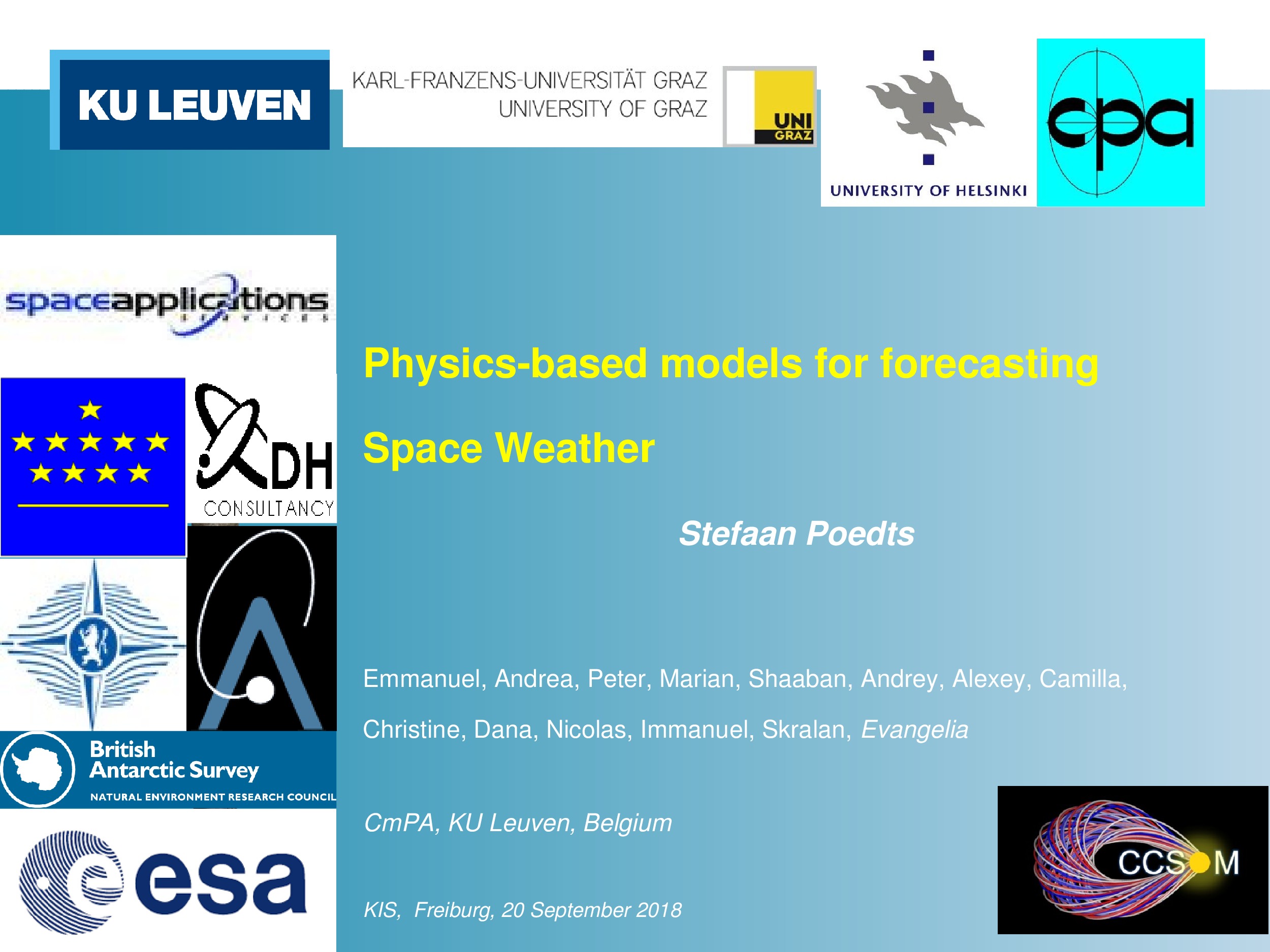Affiliation
Centre for mathematical Plasma Astrophysics/KU Leuven
Main category
Natural Sciences (Physics)
Abstract
Solar Coronal Mass Ejections (CMEs) are large-scale eruptive events in which large amounts of plasma (up to 1013-1016 g) and magnetic field are expelled into interplanetary space at very high velocities (typ. 450 km/s, but up to 3000 km/s). When sampled in situ by a spacecraft in the interplanetary medium, they are termed Interplanetary CMEs (ICMEs). They are nowadays considered to be the major drivers of “space weather” and the associated geomagnetic activity. The detectable space weather effects on Earth appear in a broad spectrum of time and length scales and have various harmful effects for human health and for our technologies on which we are ever more dependent. Severe conditions in space can hinder or damage satellite operations as well as communication and navigation systems and can even cause power grid outages leading to a variety of socio-economic losses.
CME models) and its integration in the ESA Virtual Space Weather Modeling Centre and coupling to other models (effects, magnetosphere, etc.), and focus on the latest parameter studies of the effects of the cone CME model shape and the inclusion of an internal magnetic structure of the CMEs and the potential of these features to fit the in-situ wind parameter data at L1 and other locations.
References
[1] J. Pomoell and S. Poedts: "EUHFORIA: EUropean Heliospheric FORecasting Information Asset", J. of Space Weather and Space Climate, Accepted, in press (2018).
Do you have problems viewing the pdf-file? Download presentation
here
If the presentation contains inappropriate content, please
report the presentation. You will be redirected to the landing page.
